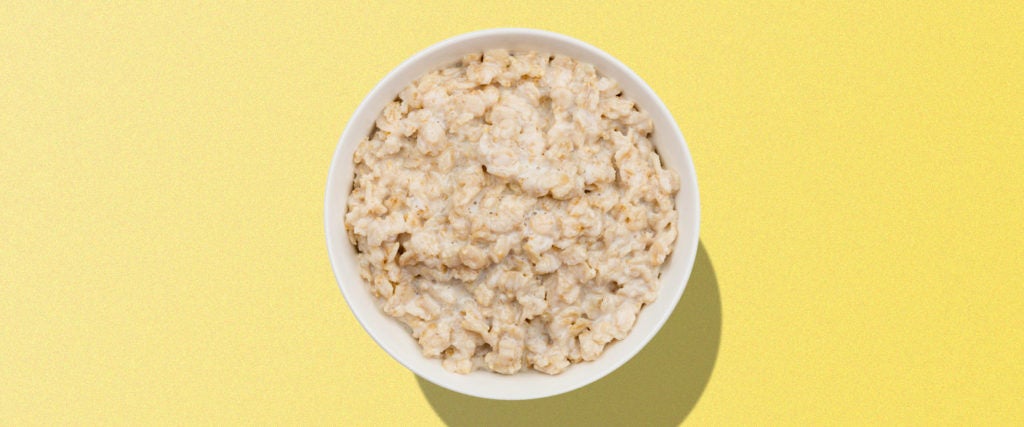Lately, for whatever reason, sitting down to make a whole-ass meal for breakfast or lunch has seemed like a monumental task. And so, I mostly eat a couple of quick oatmeal bars throughout the day until it’s time to set everything aside and put dinner together.
The thing is, like the hydration hypefest that would have you believe that water can be performance-hacked, the same thing is happening with oatmeal bars, many of which now promise more protein, more fiber and/or more nutrition. Not that any of them — from Nutrigrain to Clif to RxBars — make me feel “healthier,” or frankly, taste all that different.
Thus, would just eating a plain old bowl of oatmeal be my best bet nutritionally?
According to dietitian Trista Best, absolutely. “Ironically, many foods that can damage our health are often marketed as healthy,” she says. “The various forms of bars are very close to the top of that list. Whether they be granola bars, cereal bars and even protein bars — these processed meal replacements can actually lower your metabolism.”
That’s because, in the process of making oatmeal (or granola, or cereal, or protein) into bars that taste good, companies load them up with sugar and refined carbohydrates. And as Best explains, “Added and excess sugar slows the metabolism by overloading the liver, making it more quickly to be stored as fat. This simultaneously slows metabolism and causes weight gain.”
Moreover, she adds, “Bars are typically around 100 to 300 calories each, and when they’re replacing nutrient-dense meals, this may also inadvertently slow the consumer’s metabolism, because reducing calories substantially can cause the body to begin burning calories at a slower rate.”
That said, per Alexander Lightstone Borsand, a physician practicing preventative medicine in Arizona, oats on their own (i.e., when they’re not sugarfied and put into bar form) are a particularly healthy grain with a number of nutritional benefits. “Oats contain an antioxidant that lowers blood-pressure levels, allowing for better blood flow and more nutrients to organs and tissue,” he says, adding that the fiber found in oats promotes fullness, leads to longer periods of satiety and reduces cholesterol.
Oatmeal on its own is “a great addition to one’s diet as it’s cardio protective, helps control blood sugars and can promote healthy weight loss,” Borsand continues. But again, similar to trail mix and granola, all the aforementioned sugars and processed ingredients that go into giving oats a commercial appeal eventually outweigh the health benefits.
Interestingly, Borsand does believe oatmeal bars can have a place in a healthy diet, “but they should only be utilized as a quick source of fuel when exercising.” “As we deplete our glucose and glucagon during high intensity cardiovascular exercise,” he explains, “it can be beneficial to have a quick source of glucose to keep the body functioning correctly.”
Otherwise, the best way to performance hack oatmeal is by popping it into the microwave for 90 seconds and eating it from a bowl.

